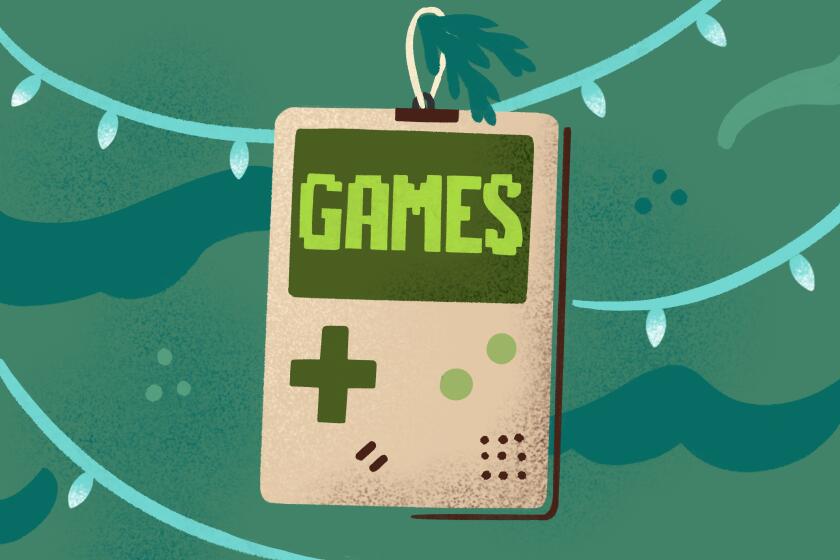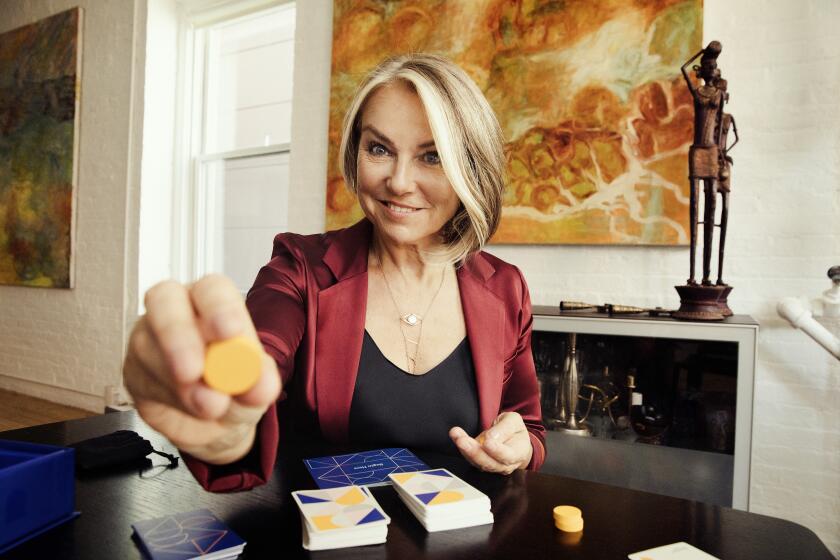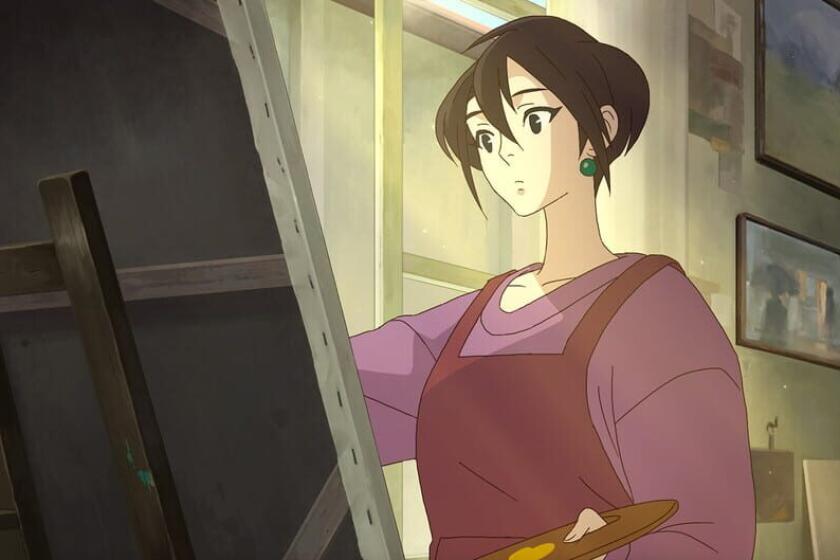‘Arcane,’ the new ‘League of Legends’ Netflix series, shows Riot Games’ ‘black licorice’ strategy
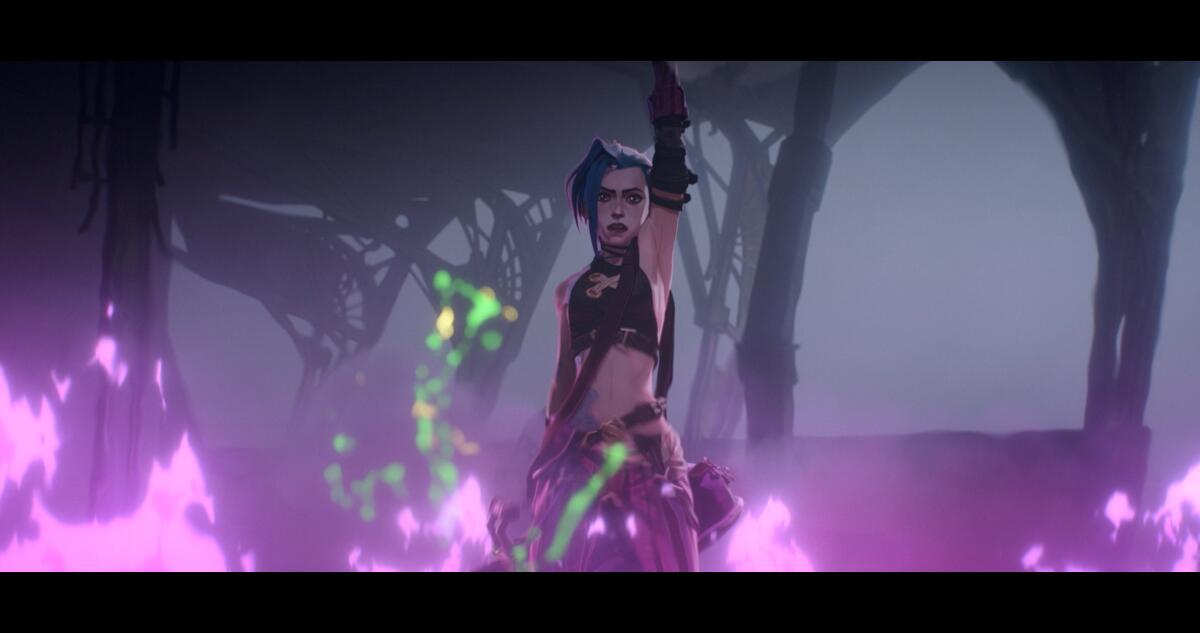
- Share via
Riot Games has helped define the modern competitive game, spurring the growth of today’s esports through “League of Legends” and solidifying the business model of games as a service.
But with its launch this weekend of an animated series for Netflix, you might assume that the company is following a more conventional narrative — to show the world that a game that stars, in the words of one its staffers, a “magical sci-fi gerbil,” can play in the grown-up universe of Hollywood.
Maybe.
Rather than simply turning over its intellectual property to established TV pros, Riot went the figure-it-out-yourself route for its new series “Arcane” — entrusting it to staffers with zero experience in the world of network animation.
Why explain games to Hollywood when you can just show Hollywood how it’s done?
“Riot,” says company co-founder Marc Merrill, “is hard to partner with.”
Riot did give the conventional route a try — taking meetings around town with agents and interested studios and distributors for what would eventually become “Arcane.” But ultimately, Riot founders Brandon Beck and Merrill made Christian Linke and Alex Yee, two longtime staffers — or, Rioters, in company parlance — co-creators, allowing them to essentially serve as showrunners. Both started at Riot on community-focused customer service teams. Neither had television experience on their resumes.
Merrill says their deep understanding of the company gave them an advantage: “If you don’t fully appreciate the journey our players have been on with these characters, there are risks it can feel, in all sorts of subtle ways, inauthentic.
“We concluded that no one is going to care to the same degree as Rioters. That is a fundamental part of the equation. ... We can add on the great capabilities that other creators can have, but we cannot sacrifice the love, the attention to detail and the historical knowledge and perspective that Rioters have.”
“League of Legends,” of course, has long been among the most popular esports on the planet, a recognizable franchise embraced even by luxury fashion brand Louis Vuitton, and this month, thanks to its launch of “Arcane,” “Fortnite.” If you want a glimpse of the future of interactive-focused storytelling, look at how Riot has handled “League of Legends.”
The studio has created virtual bands that have topped the U.S. pop charts and staged augmented reality-enhanced concerts. And at the end of last year, it named longtime Netflix executive Shauna Spenley to lead the company’s foray into film and television and to oversee a department that includes a division dedicated to story-driven games that expand the “League of Legends” brand beyond its competitive, hardcore gamer roots.
First came esport mega-hit ‘League of Legends,’ then an identity crisis. After soul searching, Riot Games has ‘Valorant’ and new idealism.
It’s not Riot that’s pivoting with its TV show “Arcane,” which was built over six somewhat stressful years. The Netflix-distributed show will join the streamer’s stable of video game-focused content, appealing, Riot hopes, to the same audience that has embraced “Castlevania,” another adult-focused, anime-inspired adaptation. Ultimately, it’s everyone else that’s trying to look like Riot, to create intellectual property — IP in shareholder-speak — built on environments in which players and viewers alike will watch, interact and live, both in physical and digital realms.
“It was pretty clear for us that gaming hours, as a percentage of overall hours, were growing in extraordinary amounts,” Spenley says of her decision to leave her vice president role at Netflix and come to Riot. “I kept tabs on esports. I kept tabs where the share of hours was going — TikTok, social media — but the big one was games.
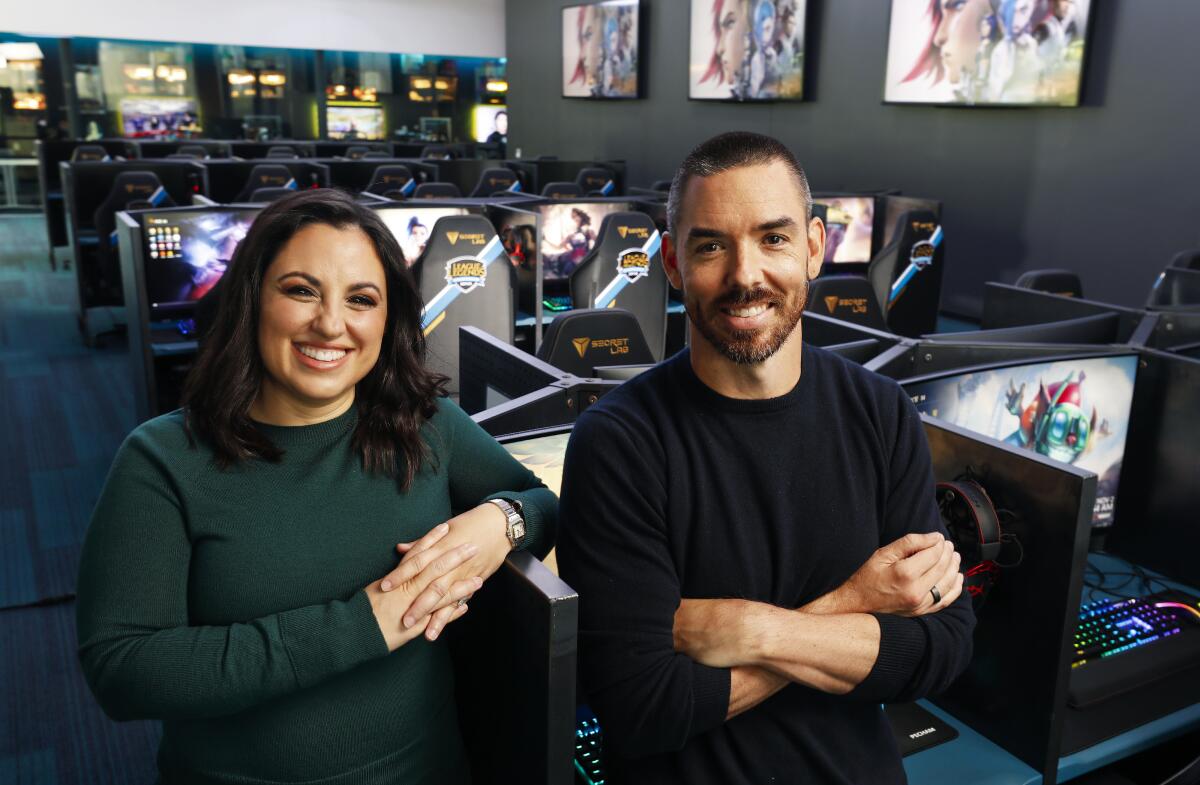
“It started to draw me in. I think the next big IP is coming from games. I think games are ultimately going to be the center of our culture. Entertainment and products that surround it will compliment gameplay.”
It’s requisite, at this point, to cite some “League of Legends” statistics, and Riot reports that more than 180 million people had played within its “League”-branded games throughout October. “Arcane” explores a small slice, centering on the reckless, chaos-inducing character of Jinx and her sister Vi. It’s an action sci-fi fantasy story that alludes to big topics such as class divisions and the benefits of the privileged, but zeroes in on family tensions and the untamed, sometimes borderline-creepy behavior of Jinx, a Harley Quinn-like character with a mixture of recklessness and earnestness.
It’s also a linear narrative told over nine episodes. “I think the dream goes toward being able to offer our audience experiences that are not just completely passive,” says Linke, who began pitching the series within Riot after having internal success with short-form music videos that introduced backstories for “League” characters.
Experiments, however, that have attempted to merge games and television, many of which take a choose-your-own-adventure-inspired format, have generally been, well, not very good.
“I think we as creatives have to be careful,” Linke says. “At the end of the day, the common person signs up for an experience because they want to be entertained by someone who is better than them at telling a story. This interactive idea of giving the audience too much control also means they’re not going to make the best choice to be entertained.”
The goal for now isn’t about the invention or reinvention of any formats, or to imagine what a more approachable version of “League of Legends” looks like. It’s simply to feed the audience that already exists with more stories, and that can be “Arcane,” or later this month an immersive theater-inspired multi-week event in Los Angeles via “Arcane: Enter the Undercity,” a partnership with London-based immersive firm Secret Cinema.
“I don’t think most of Hollywood realizes how massive this is,” Spenley says. “I think that we have a huge opportunity to build amazing organic stories inside of this world, and for it to quietly build and become the IP that defines a generation. It’s going to take a little time.”
‘We want to be black licorice’
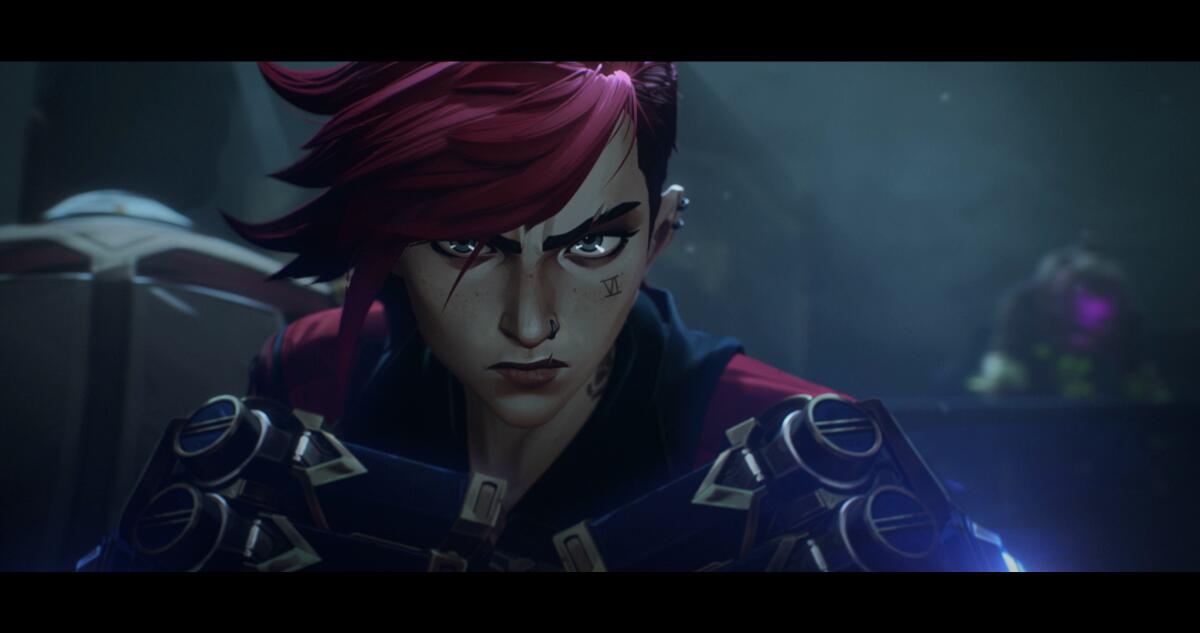
Topics and debates that dominated gaming in recent weeks have been more tech-focused. See the potential for persistent online worlds such as the so-called metaverse, or how an NFT, which stands for nonfungible token, can transform the game universe, essentially by creating ownable virtual items or leading to play-to-earn models.
Merrill, who since 2006 has helped turn the company into a video game behemoth while also attempting to weather a cultural crisis of legal accusations concerning workplace and sexual harassment, has opinions on both issues. Last year, in an interview with The Times he frankly discussed the company’s “soul searching” and the actions it has taken to restore the confidence of its staff and the industry.
Today, sitting in a communal space that doubles as a video game museum — Merrill is flanked by six televisions of different eras as well as at least one copy of every video game console ever made — he’s at ease forecasting where the game business and Riot is heading.
Riot has dabbled with the world of virtual, interactive concerts, but he is also content to let others try to establish what such a digital metaverse-like space can look like and is willing to bring “League” content there. “Arcane,” for instance, provided the opportunity to collaborate with Epic Games’ “Fortnite,” a game that doubles as a mash-up of global franchises. As Merrill talks about long-term goals, his references tend to lean more toward story-focused entertainment brands.
“If other companies are doing an incredible job — better than us at having the content to reach people who want to see it — awesome,” Merrill says. “Also, I think one question is around user-generated content — crowdsource versus curated. We tend to believe that there’s going to be, for a very long time, a lot of demand for incredibly well-crafted things. And that’s where we’re focused. Maybe Pixar is the one company that has managed to sustain creative excellence over a very long period of time.”
And while other video game houses have spoken favorably of an NFT future, Merrill again is taking a wait-and-see approach. Still, he concedes that NFTs, unique pieces of code that work like electronic certificates of authenticity and allow for the sale and ownership of pretty much anything, are a “massive growth segment.”
“It’d be a fundamentally different economy than the current Riot ecosystem,” Merrill says. “We are selling digital goods, but it’s a license on our service, not ownership. The ownership transition fits a different content much better than it fits what we’re trying to do, which isn’t to say we couldn’t do some R&D and explore what that could look like. We are experimenting and thinking about it, but it is a very different model and approach.”
The near-term future for Riot’s focus is quite clear.
Soon, the company will reveal more details on its publishing label Riot Forge, a division that falls under Spenley’s purview. Riot Forge games will take less of a player-versus-player track to instead focus on narrative or experimental experiences. Those at Riot today typically speak of the company as something more akin to a traditional entertainment firm rather than a tech-focused game publisher.
Games that employ tech old and new, as well as some face-to-face options, for celebrating the power of interactivity — the ability to connect, to share and to bond.
“I met Marc last summer, and he said, ‘We have a couple hundred million people who have played this game and are begging for more content around our IP. We just need to figure out how to do it,’” Spenley recalls.
“One of the things I heard when I first got here was, ‘We want to be black licorice.’ That was so jarring to hear. It’s OK if we’re not for everyone. [At Netflix,] I was at a place where we were supposed to be something for everyone. It’s really nice for me, personally, to have that focus and understand the player better and the stories that resonate. We don’t have the constraints that ‘this has to to scale.’ We’re more of a think-tank.”
But even this emphasis on story-driven experiences hasn’t come naturally. “League of Legends,” though steeped in fantasy lore, is a competitive game aimed at one of the most die-hard segments of the community. To those not versed in its language, it’s admittedly overwhelming.
Linke and Yee met with resistance in pitching “Arcane.” An animated series seemed like a large project, and no one was particularly excited to figure out how to make one.
“I remember going to them and saying, ‘I think there could be an animated series about Vi, and it could be really cool.’ Their first answer was no,” Linke says of when he started the project six to seven years ago. “I remember them saying, ‘If you have story ideas, bring them to the teams that do this stuff.’ We had CG teams, and we had a film team that was exploring stuff, and I would go to the teams and everyone said, ‘No thanks.’ So I guess we’ll just have to do it ourselves.”
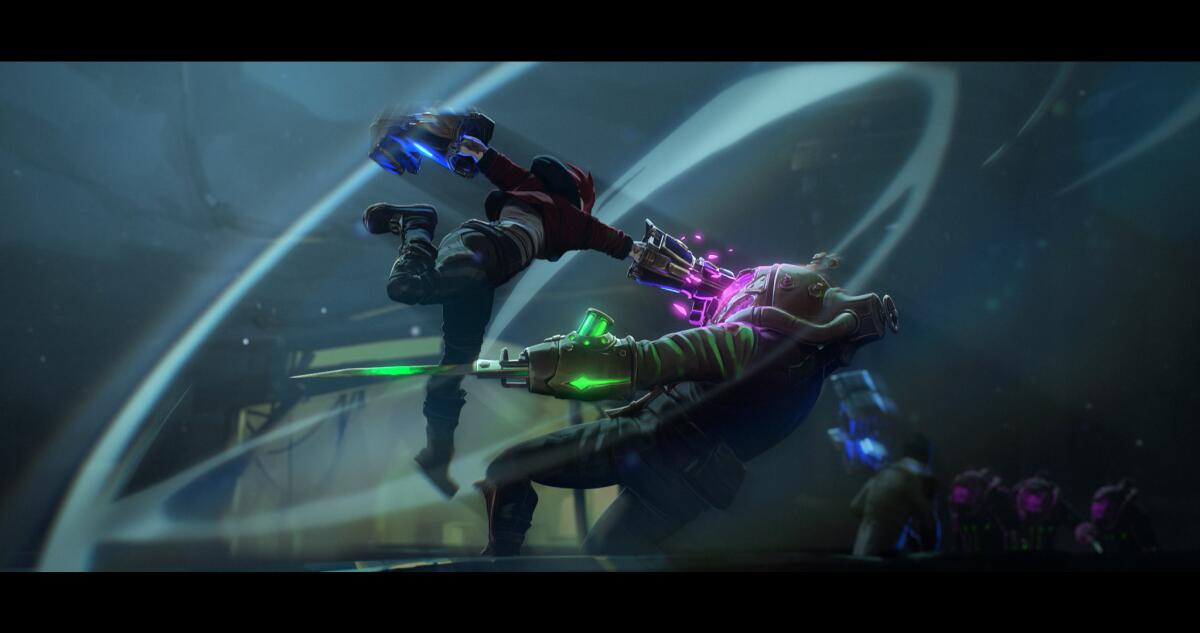
Working in his favor, however, was his close relationship with French animation house Fortiche Production, which was where Riot turned for all its music videos and animated character introductions. Collaborating with Toa Dunn, now Riot’s head of music, Linke and Yee were able to carve a niche that took the lead on Riot’s music-focused animation, which in turn furthered the world-building of the characters in the game with lyrics, poems and more detailed backstories.
It’s why Riot didn’t completely shut the door on Linke’s ambitions.
“He was involved in a lot of the original creation for some of the main cast of characters who show up in ‘Arcane,’ and always had deep care and passion for who these characters are,” Merrill says. “As a player, he knows how attached our players are to these characters. He wanted to embark on this quest to figure out how to do a story that could do justice to the high expectations of our players.”
When he re-pitched it, Linke scaled down his ambitions. A few months after the initial rebuff, he asked for $5,000.
“I found these two artists from Russia and had some concept art done and showed it to them. I said, ‘OK, give me $15 grand to do some 3-D models.’ I started talking to Fortiche and said, ‘I don’t know what this can be,’ but we did a 3-D model of Vi while I was working on the story,” Linke says. “Then I said, ‘Now I need 60 grand to do some rudimentary tests of animation.’
“Then that was enough. At that point, the question was whether we were doing this or not.” And who was making it.
“I think music and animation are our strong points,” says Dunn, who also gained television experience with “Arcane.” “But they could have licensed it out, and they talked about that. But it had to be right. It had to have all the things we wanted it to have, and sometimes you just have to make it.”
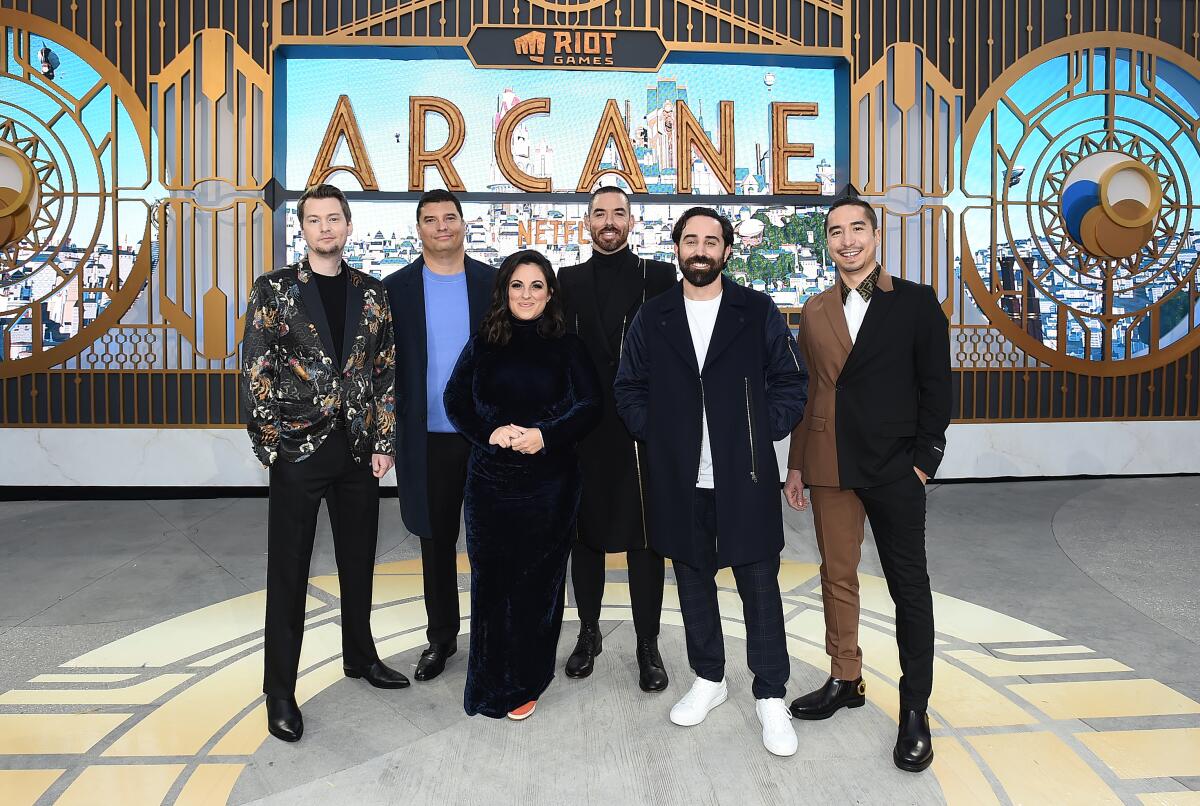
There were growing pains, including when production was halted to refocus the scripts. Linke talks openly of his learning curve, admitting that he discovered it’s better to speak with animators in terms of tone, emotion and story rather than to try to dictate an image’s specific look. Ultimately, Spenley thinks of “Arcane” as a sort of calling card, a proof that Riot can tell its own tales.
She’s not nervous about the reception, in part because she knows that regardless, there’s more to come.
“You can’t farm out heart,” Spenley says. “It has to be built properly. Players can tell. They’re looking for elements they can identify with. I don’t think you can build that easily with outside partners. I think that has to be built from within. At this point, we’re trying to figure out how to re-create that as we step into live action and other stories.”
And it’s not, Spenley stresses, about graduating from games to film and television. If anything, the mission is the exact opposite.
“When you’re building great IP, and we hope to do that, we want our players to feel like it was holistically built for them, versus this feeling it’s different business units,” Spenley says. “That’s a very bad outcome. All of this is about games at the center of culture. It’s the inverse of what a Disney would do. They’re putting their films at the center of culture. We really see that games are the center of culture, and these complement that experience.”
One benefit of “Arcane” is that it at long lasts allows people to experience core “League of Legends” characters and worlds without the fear of being obliterated by a stranger.
An interview with Esther Perel — the psychotherapist behind the popular podcast “Where Should We Begin?” and now a game developer — turns into a therapy session.
Memory and a mystery relationship are poignantly conveyed through paintings in the short game ‘Behind the Frame.’
More to Read
The biggest entertainment stories
Get our big stories about Hollywood, film, television, music, arts, culture and more right in your inbox as soon as they publish.
You may occasionally receive promotional content from the Los Angeles Times.
